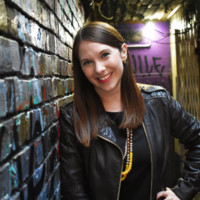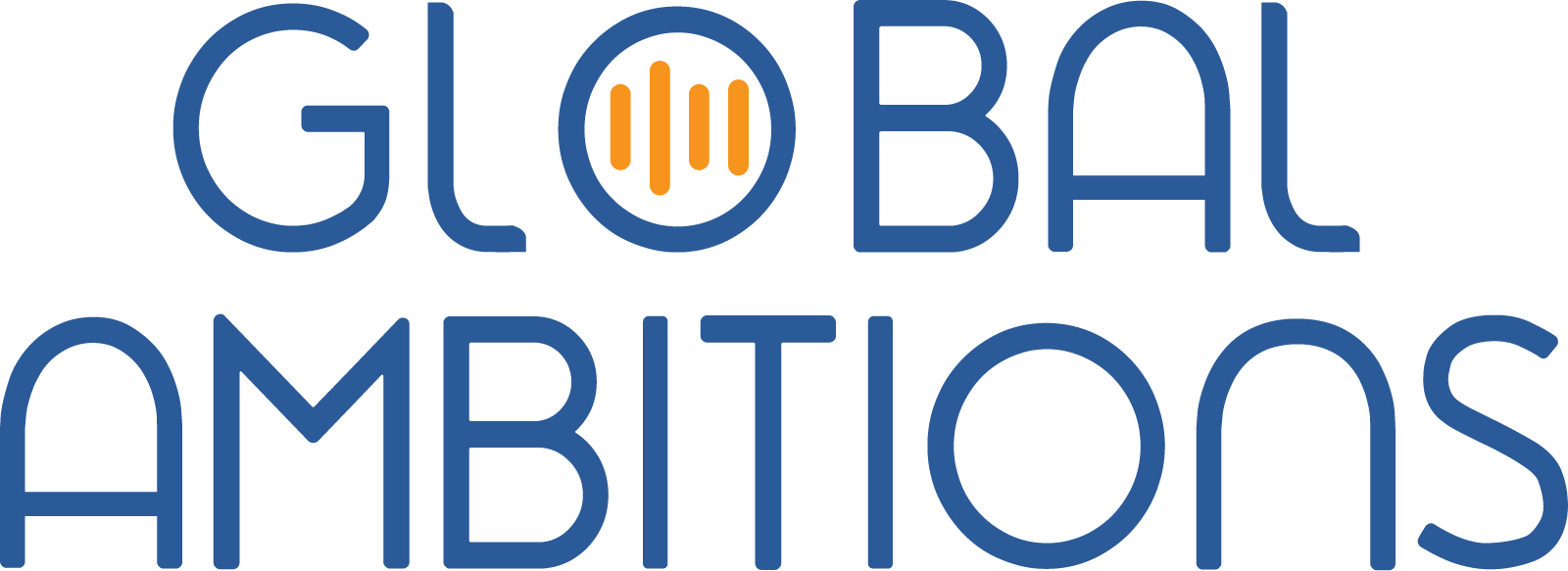Episode 2: With Melanie Heighway, Product Localization Senior Team Lead at Atlassian.
This is the transcript for Episode 2 of Global Ambitions released on February 1, 2021.
Antoine Rey 00:00:04,733
Hi, everybody. I’m Antoine Rey with global ambitions and I’ll be your host today. We’re 15 minutes of localization and go-to-market insights and the format is short, actionable, and sharp.
So today, my guest is Melanie Heighway from Atlassian. She’s a senior team leader for Product Localization based in Australia. Melanie, I’ll let you introduce yourself.
Melanie Heighway 00:00:32,100
Thank you. I’m Melanie, I run product localization of Atlassian based out of the Sydney office. And I’m basically responsible for ensuring that all of Atlassian products are internationalized and localized into our supported languages.
So my main content that I work with is software localization. And we do have a different
department who also looks after everything that’s go-to-market and everything that
goes into our journey into the product. But my team looks, exclusively, after the product
strings specifically.
Antoine Rey 00:01:14,267
Our topic today, the specific topic is going to be around those software strings and how to internationalize your product, and why that is important. So can you tell us what you did at first? Because a lot of people that get into becoming a localization manager maybe don’t think that they’re going to have to deal with engineers and code and software strings there.
So maybe can you tell us a little bit about that and what the biggest challenge has been for you at Atlassian?
Melanie Heighway 00:01:44,200
Yeah, definitely, as a localization manager coming into a new company, with that type of localization manager, you kind of walk in thinking, OK, I’ve got to make sure I’ve got the right vendors to work with, to look at the quality and how that’s all going.
But when I entered it last year and I did exactly that and I took a bit of a step back and thought, oh, gosh, before I even go through the gate, we’ve got to make sure that the strings are correctly internationalized because we can’t actually localize this without this.
Without them being correctly internationalized. Even the best translators out there, if they’re given a string that hasn’t been written in a way that it is localizable, they just can’t do a good job. So that was definitely something that has made me have to take a step back.
It was also the case with my previous company actually, as well. One thing I didn’t realize when you do work on a product and with software strings is that not only are you working with localization vendors and obviously it is very focused on quality, there is a lot of elements of education.
Educating on the business, on internationalization, and working with engineers. And I did not actually anticipate that.
Antoine Rey 00:03:02,733
So you have to work with the engineers to evangelize internationalization in this case?
Melinae Heighway 00:03:08,967
Yeah, it’s not so much evangelizing localization and internationalization. But there is an element of that because you do need to talk about the why.
Like, why should you care before I launch? How you should do it? But honestly, you start out with giving the presentation. You start out talking about how big your international user base is. And it’s very compelling. That is quickly accepted and it’s very clear that it’s important. But actually doing the education has been quite challenging.
So everybody confirms that internationalization is important at the company, particularly the leaders. But, the next step of actually going and making sure that the engineer is correctly educated to know how to write strings in a localizable friendly way is quite challenging. Particularly where you’ve got so many different products and so many different engineering teams.
And then on top of that, each of the different engineering teams, even within a product, are working with different tech stacks and even different versions of internationalization libraries within the same internationalization library.
So, yeah, there’s all these different facets of education that has to take place after you’ve demonstrated that it’s important. It’s actually very challenging to just go so deep with so many different people.
Antoine Rey
So all of a sudden then you have a large, powerful engineering team in an organization like Atlassian and you have a localization team that comes in and tells them, hang on a second, we’re going to reject some of your software strings. How is that accepted or perceived by the engineering team?
Melanie Heighway 00:04:51,367
Yeah, that’s a good question, because when I first started, I’m pretty sure engineers were a bit taken aback when someone approached them and said, hey, can you actually just rewrite the string? I can’t localize it.
Ther is a bit of a “who are you? sorry?“. But honestly, I’ve only found that the engineers have been really respectful and gone back and rewritten strings when I’ve asked them to do so. And every engineer wants to do things the right way. They don’t like to be told they’ve done something the wrong way. So I’ve only been met with acceptance and helpfulness as well. And as time has gone on, I’ve met with engineering team leaders and made sure that they’re aware of the initiative that we’re trying to do with education.
They do understand the importance of internationalization and have been very accepting of that and supportive. And so we haven’t really had too many problems with convincing engineers to read our education, our self-service guidelines, and also to rewrite strings where needed for localization purposes.
Antoine Rey 00:06:00,433
And so how does that work in this case? You go to engineers directly or you go to management? You go and speak at events? What are the main steps to put
the process in place? I guess worldwide it has to be quite a challenge. Is that your biggest challenge?
Melanie Heighway 00:06:17,067
I suppose it is quite challenging. There are different ways to do it. You can actually, I guess, stop the stream from going into your TMS and actually working in the GIT repos directly and talking to engineers, approving or rejecting pull requests.
What we do is, though, rather than working in groups and approving or rejecting pull requests, we actually look at each string in our TMS and we exclude strings that need to be rewritten. There is a bit of a manual element at the moment that we’re looking to automate where we then look at the key of the string and we identify the engineer who wrote it based on GIT history. So we go into BitBucket, we take a look, and then we reach out to them.
We have different stakeholder channels that we interact with the developers for
different products. For example, with Trello, we will identify a key that can’t be localized. We’ll go to the Trello channel and we’ll call out. You know, we can’t localize this. We need you to rewrite it. Or we can individually approach the developer as well. But generally speaking, developers are responsive and they do end up correcting their string and resubmitting the string.
And then it goes back into our team for localization.
Antoine Rey 00:07:50,967
And that might be for a different session there, but do you also reach out to the management and even senior executives to make this a priority, or how does that work?
Melanie Heighway 00:08:03,400
We don’t usually have to unless there are repeat issues going on or it’s becoming a blocker for us. Like, for example, if someone hasn’t written a string for an urgent release thats coming up. And we really need that string, obviously, to localize it and get it out in time for the release or, you know, there’s a repeat issue.
So, for example, we have had an instance where we’ve been trying to mandate ICU message format for pluralization and certain teams were continuing to use a different format choice in this particular case, which wasn’t localization friendly. And so time after time, we were going back, with the same feedback, kind of like a broken record. And it did get to a point where we decided to meet with leadership and say, OK, we need to actually roll this out. We need you on board. Also, what are the blockers? Is there anything from your end that might impact this? And that has been quite successful as well.
Antoine Rey 00:09:06,267
OK, and since you work in the TMS, do you actually involve the vendors that you work
with identifying the strings that you need to reject or is it your team who does that?
Melanie Heighway 00:09:18,633
Our team primarily does that. So they do the first pass where they rate every single string before sending it to the vendors. But as you know, things fall through the cracks. Or sometimes when we’re looking at things, we think, yeah, that looks pretty straightforward. But the vendors actually disagree or one of the translators because they’re looking so closely at the strain. Each individual will come back and pick up things that have fallen through the cracks.
So it’s a bit of both, but primarily it’s our team.
Antoine Rey 00:09:44,367
OK, and so to go into very practical aspects for our listeners, what are some of the
mistakes that you’ve come through that you would advise avoiding? And what has been the impact of those?
Melanie Heighway 00:09:59,700
Yeah, I guess I think walking into the company, I mean, just in general, you kind of want to boil the ocean. You want to do everything at once. Sometimes it’s good to just sit down and go, OK, these are proof of concept. First, let’s start with a small project and see how this goes and then demonstrate that that’s what you’re trying to achieve and that’s what you’ve achieved.
That and also, I guess, the theme of not boiling the ocean. One good piece of advice that
I got from Gary Liftman, actually, an internationalization engineer at Cisco when we were at a LocWorld conference, once had lunch with him just chatting. And he talked about the concept of separation of concerns, which is an engineering concept where you break down an issue into different parts, smaller chunks essentially to deal with. And I realized that I needed to do that with the internationalization issues that we were facing because I was kind of approaching it from the … It was just too many things and everything just looked very messy. By separating it and tackling each problem one at a time, I had better luck for sure.
Antoine Rey 00:11:11,367
OK, that’ll be very useful, I think, for everyone to take some guidance on. And on the opposite side, then on the flip side, what about the successes? The things that you’ve done, like maybe the separation of tasks there. But I’m sure there are other things that you might have done that have been successful with the engineering team in localizing your product.
Melanie Heighway 00:11:32,267
Yeah, I think it was really, really working closely with the engineers, both finding who my allies were, people who were very clearly interested in internationalization, but also talking to the people who were frustrated with internationalization.
So when I first came in, I noticed there are a number of people who are just frustrated and almost thought of internationalization as a bottleneck. And I met with them. I sat down, I asked them to explain their experience and what issues they were having. And through that, I was able to understand where we need to improve the process. Because obviously, we need to have buy-in from engineers. They need to understand what the reason is for doing something in the first place.
Once I was able to understand that, I was able to go back and then explain what we
were trying to achieve and how we could do it together, and that really helped. And then also through that, I was able to build allies because ultimately you form a good relationship with that engineer. They also help explain engineering things to you that could be quite challenging for a non-engineer to understand. And it’s a great partnership.
And if you do that with all the different products that you’re working on, the different engineers, engineering teams you find, you kind of built yourself an internationalization task force group within the business. And it makes it easier to evangelize. But also when you write guidelines to kind of put on your engineer hat, even run your guidelines past engineers and ask them if it makes sense or perhaps if you’ve got something wrong. It’s been very useful for sure.
Antoine Rey 00:13:05,667
So maybe not the right time to bring those accepted software strings into their OKRs yet,
or rejected software strings into the OKRs.
Melanie Heighway 00:13:17,500
Yeah, not quite yet. That might scare them away.
Antoine Rey 00:13:22,000
So once you get into a place where it’s working and it’s flowing, then there are some successes that you’ve noticed as well? How does that impact localization?
Melanie Heighway 00:13:32,567
Yeah, it definitely I think one of the number one ways we’ve seen success is the reduction of translater queries because strings have not needed to be rewritten. Or strings have had enough context, even just through translator notes, descriptions in the source file that the engineers provide that they’ve actually not had to ask so many questions. So that’s been a great way.
Quality has definitely improved as well because of context and also not having to work with strings that are concatenated together or, you know, making do with a string that
wasn’t really written for localization. That’s actually improved quality as well.
Antoine Rey 00:14:16,233
Very good, very good. Well, thanks very much for those insights, Melanie. I think this is a very practical, actionable kind of information that our listeners would be looking to apply in their own company.
Well, listen, thanks very much for your contribution today. This is great. And we’ll talk to you very soon. Thank you.

Melanie Heighway
Product Localization Senior Team Lead at Atlassian.




